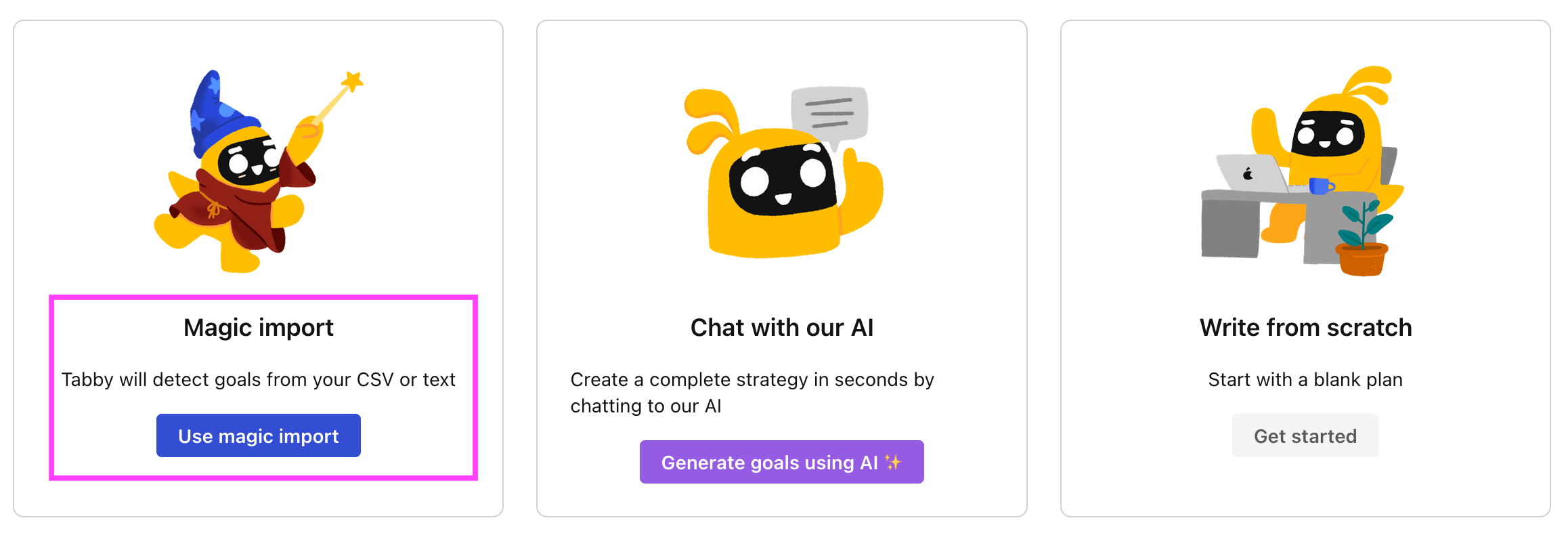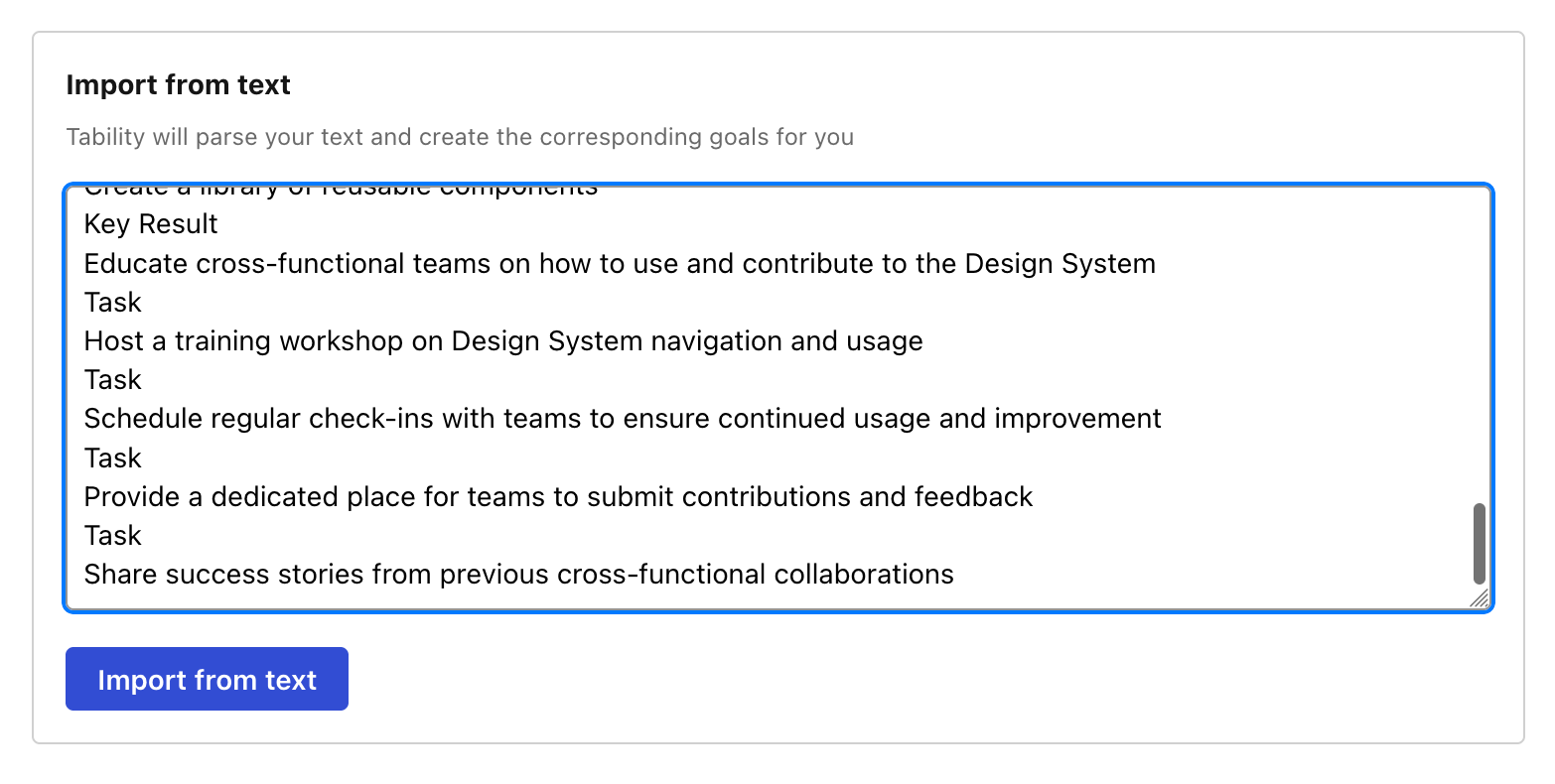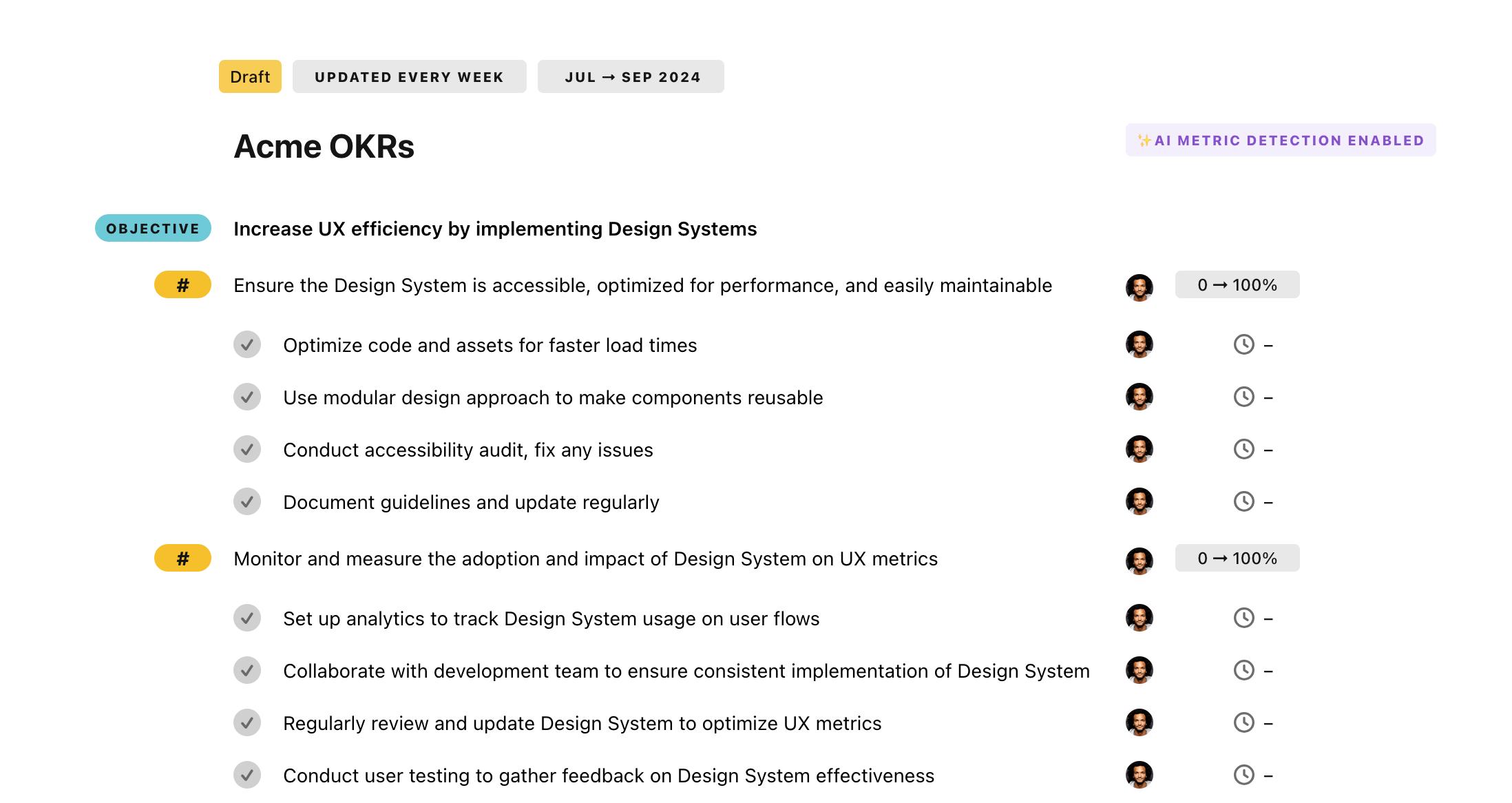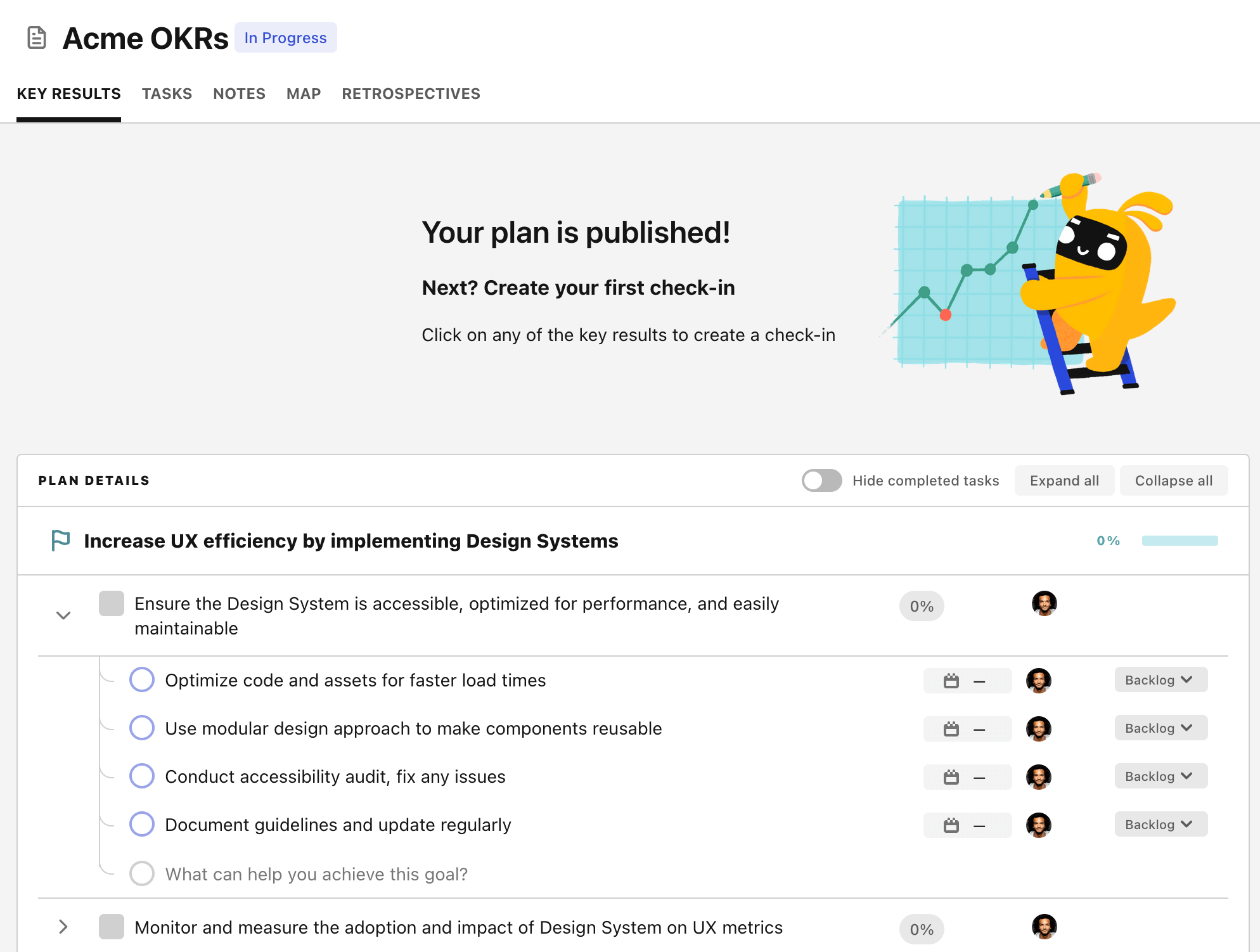OKR template to enhance discipline attendance and turnaround time (TAT)
Your OKR template
Another objective is to increase average discipline session attendance by 15%. This goal can be met by improving content quality, enhancing marketing efforts to raise session awareness, and introducing a reward system for consistent attendance.
A third initiative is to improve attendance and TAT metric tracking systems. By implementing advanced software for data collection and evaluation of current tracking methods, we can pinpoint and rectify any deficiencies.
Training of staff on the usage and interpretation of these new tracking tools will ensure smooth implementation. This meticulous tracking of TAT and engagement is expected to yield precise and accurate data, leading to the intended improvements.
ObjectiveEnhance discipline attendance and turnaround time (TAT)
KRReduce total TAT in disciplinaries by 20%
Regularly review and adjust the disciplinary timetable
Train management on efficient disciplinary execution
Implement a streamlined, standardized disciplinary process
KRIncrease average attendance by 15% for the discipline sessions
Improve content quality to increase interest
Enhance marketing efforts to raise awareness about the discipline sessions
Implement a reward system for consistent attendance
KRImprove tracking system to accurately report attendance and TAT metrics
Implement advanced software for precise data collection and interpretation
Evaluate current attendance and TAT tracking methods for any deficiencies
Train employees on newly introduced tracking tools usage & interpretation
How to edit and track OKRs with Tability
You'll probably want to edit the examples in this post, and Tability is the perfect tool for it.
Tability is an AI-powered platform that helps teams set better goals, monitor execution, and get help to achieve their objectives faster.
With Tability you can:
- Use AI to draft a complete set of OKRs in seconds
- Connect your OKRs and team goals to your project
- Automate reporting with integrations and built-in dashboard
Instead of having to copy the content of the OKR examples in a doc or spreadsheet, you can use Tability’s magic importer to start using any of the examples in this page.
The import process can be done in seconds, allowing you to edit OKRs directly in a platform that knows how to manage and track goals.
Step 1. Sign up for a free Tability account
Go tohttps://tability.app/signup and create your account (it's free!)
Step 2. Create a plan
Follow the steps after your onboarding to create your first plan, you should get to a page that looks like the picture below.

Step 3. Use the magic importer
Click on Use magic import to open up the Magic Import modal.
Now, go back to the OKR examples, and click on Copy on the example that you’d like to use.

Paste the content in the text import section. Don’t worry about the formatting, Tability’s AI will be able to parse it!

Now, just click on Import from text and let the magic happen.

Once your example is in the plan editor, you will be able to:
- Edit the objectives, key results, and tasks
- Click on the target 0 → 100% to set better target
- Use the tips and the AI to refine your goals
Step 4. Publish your plan
Once you’re done editing, you can publish your plan to switch to the goal-tracking mode.

From there you will have access to all the features that will help you and your team save hours with OKR reporting.
- 10+ built-in dashboards to visualise progress on your goals
- Weekly reminders, data connectors, and smart notifications
- 9 views to map OKRs to strategic projects
- Strategy map to align teams at scale